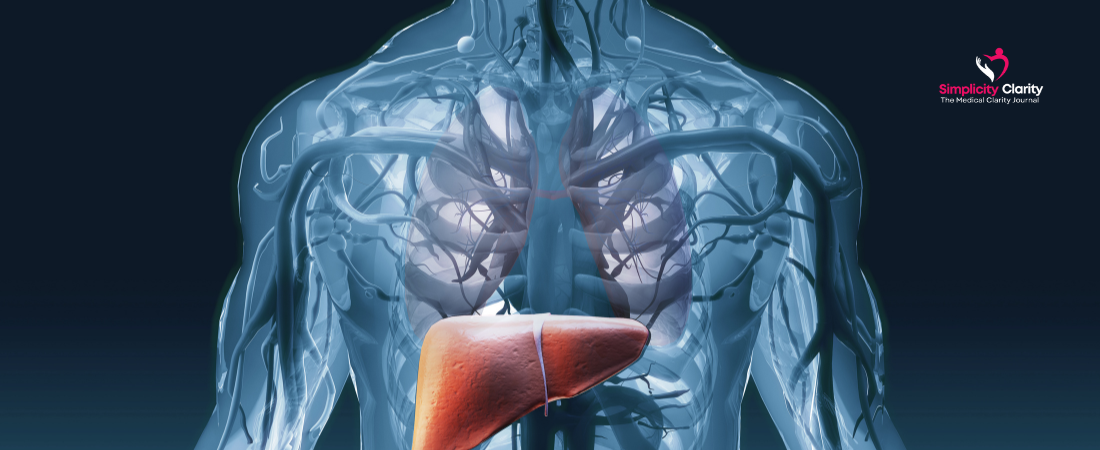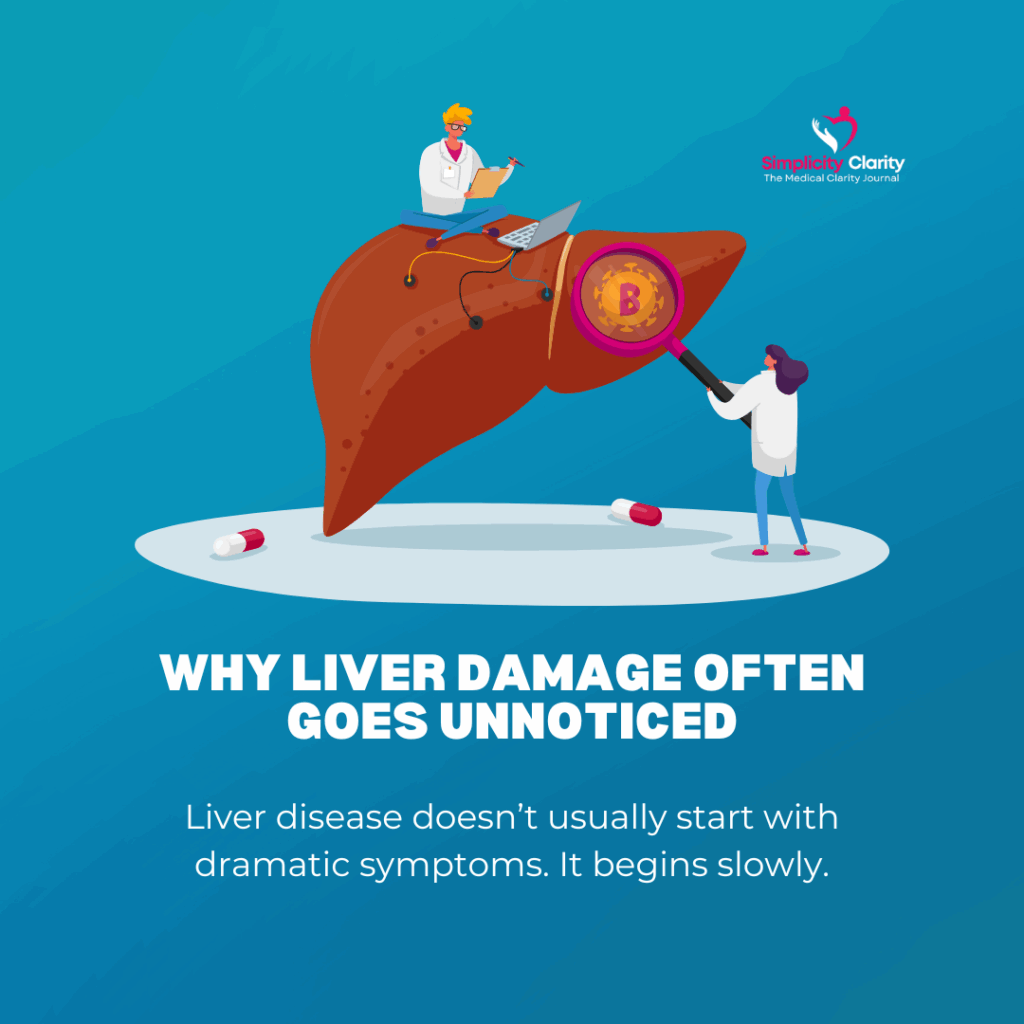
Prolonged OTC Drug Abuse and Liver Damage: Hidden Dangers You Must Know
- May 23, 2025
- 1 Like
- 450 Views
- 0 Comments
Abstract
Over-the-counter (OTC) medications are globally popular for managing everyday health issues. They are cheap, accessible, and often seen as harmless. However, the prolonged misuse or habitual overuse of OTC drugs—especially painkillers and herbal remedies—can cause serious and sometimes irreversible damage to the liver. This paper aims to explore the full scope of liver-related health consequences stemming from the abuse of OTC medications. We will examine commonly implicated substances like paracetamol (acetaminophen), non-steroidal anti-inflammatory drugs (NSAIDs), and unregulated herbal remedies, and unpack how they interfere with liver function. Through a combination of in-depth clinical evidence, real-world African case studies, practical preventive advice, and understandable pathophysiological explanations, we hope to raise awareness about this underreported public health issue. Our goal is to provide both international and African audiences—including patients, caregivers, and healthcare workers—with the knowledge needed to identify and prevent long-term liver damage caused by seemingly innocent drugs.
Keywords: OTC medications, liver toxicity, chronic liver damage, hepatotoxicity, paracetamol, NSAIDs, traditional medicine, self-medication, African healthcare
Introduction
From rural villages to busy urban centers, many people reach for over-the-counter drugs to manage daily health complaints. Whether it’s a headache, a fever, menstrual cramps, back pain, or flu symptoms, OTC drugs are a common go-to solution. The ease of buying them without needing a doctor’s prescription has made them a part of many households across the globe—especially in low-resource settings where healthcare systems may be overburdened or hard to access. In African countries, informal drug shops and kiosks are often the first point of care.
But while these medications are intended to offer short-term relief, problems begin to arise when they are taken frequently, in large amounts, or mixed with other drugs unknowingly. Sadly, the liver, which is responsible for detoxifying substances that enter the body, bears the brunt of this misuse. The consequences can be severe, ranging from liver inflammation to irreversible scarring, organ failure, and even death.
This research paper takes a deep dive into this pressing issue. We highlight key drugs involved in liver damage, explain how the liver processes them, and break down the warning signs that are often missed. Through culturally relevant examples and simple explanations tailored to international and African contexts, we hope to create a lasting awareness of this silent health hazard.

The Liver: Your Body’s Detox Factory
The liver is one of the body’s most important organs. It acts like a high-powered engine, constantly working to filter blood, process nutrients, produce proteins, and detoxify harmful substances. Every time we take medicine—especially pills, syrups, or herbal teas—the liver must process them so they can be safely removed from the body.
How the Liver Gets Damaged by Drugs
When drugs are used in moderation and as instructed, the liver can usually handle the load. But when drugs are misused—taken too often, in high doses, or mixed in harmful combinations—the liver becomes overwhelmed. This leads to a condition known as drug-induced liver injury (DILI).
Pathophysiology of Drug-Induced Liver Injury (DILI)
The liver metabolizes most drugs using enzymes, especially from the cytochrome P450 family. In the process, some drugs produce toxic metabolites. If these metabolites are not neutralized in time, they begin to damage liver cells.
- Hepatocellular Injury: This is direct damage to the main liver cells (hepatocytes). Paracetamol is a classic example. In overdose situations, it produces a toxic byproduct (NAPQI) that overwhelms the liver’s detox ability and kills liver cells.
- Cholestatic Injury: Some drugs block the flow of bile (a fluid the liver produces to help digest fats). This leads to a buildup of waste products and inflammation.
- Mixed Injury: A combination of both hepatocellular and cholestatic damage.
If left unchecked, repeated damage causes inflammation and leads to fibrosis (scarring). Over time, fibrosis can progress to cirrhosis, a condition where the liver becomes hard, lumpy, and less effective. Eventually, chronic inflammation and scarring increase the risk of liver cancer (hepatocellular carcinoma).
OTC Drugs Most Commonly Linked to Liver Damage
- Paracetamol (Acetaminophen)
- Action: Used for pain and fever.
- Danger: Easy to overdose, especially when unknowingly combining multiple products containing paracetamol. Just 4 grams per day can be toxic for some people.
- Case Study: In Uganda, a middle-aged woman took cold relief tablets, painkillers, and cough syrup daily for flu and headaches. All contained paracetamol. She developed liver failure and was hospitalized. She never realized she had overdosed.
- NSAIDs (Ibuprofen, Diclofenac, Naproxen)
- Action: Reduce pain and inflammation.
- Danger: Chronic use damages liver cells, reduces blood flow, and can harm kidneys as well.
- Real-life Scenario: A Kenyan construction worker took NSAIDs daily for body aches. He eventually developed chronic hepatitis and needed a liver biopsy.
- Aspirin
- Action: Used for pain and blood thinning.
- Danger: In high doses or for prolonged periods, aspirin can irritate the liver lining, especially when combined with alcohol or other drugs.
- Herbal Medicines and Supplements
- Use in Africa: Commonly used for treating multiple ailments and as “detox” remedies.
- Risks: Many herbs contain compounds that are toxic to the liver, especially when taken in high quantities or with alcohol.
- Case Study: In Tanzania, a young man used a herbal concoction for liver health. Ironically, the preparation had hepatotoxic ingredients, and he ended up with jaundice and liver enlargement.
Why Liver Damage Often Goes Unnoticed
Liver disease doesn’t usually start with dramatic symptoms. It begins slowly. People may feel tired, have poor appetite, or get occasional stomach discomfort. These signs are often blamed on malaria, typhoid, or “weak blood.”
In many rural areas, diagnostic tools like liver function tests (LFTs), ultrasound, or liver biopsy are not easily available. Healthcare workers may not suspect liver damage until it’s too late. By then, signs like yellowing of the eyes (jaundice), fluid in the belly (ascites), or confusion from brain toxicity (hepatic encephalopathy) appear.
Long-term Health Consequences of OTC Drug Abuse
- Chronic Liver Disease (CLD)
- Results from long-standing liver inflammation.
- Causes fatigue, digestive problems, and poor quality of life.
- Cirrhosis
- Severe scarring of the liver that blocks blood flow.
- Leads to swelling, easy bleeding, infections, and liver failure.
- Liver Cancer (Hepatocellular Carcinoma)
- Chronic irritation, scarring, and liver cell changes increase cancer risk.
- Liver cancer often grows silently and is discovered late.
- Multi-Organ Failure
- When the liver fails, it affects blood clotting, brain function, and kidney health.
- Emergency treatment is needed, but options are limited in many areas.
Public Health and Prevention Strategies
- Education and Awareness
- Community-based campaigns using radio, posters, and social media.
- Schools and churches can host health talks about medicine safety.
- Better Labeling and Packaging
- Clear dosage instructions.
- Warnings in local languages.
- Highlighting the maximum daily dose.
- Training for Health Vendors
- Informal drug sellers must be trained to avoid giving wrong doses.
- Pharmacists should educate customers about risks.
- Healthcare Access and Early Screening
- Liver function testing should be part of routine checks.
- Make diagnostic services affordable and mobile in rural areas.
- Regulatory Control of Herbal Products
- Governments need to regulate and test herbal mixtures.
- Encourage research into safe traditional practices.
- Encouraging Medical Consultation
- People should be advised to see a healthcare provider if symptoms persist.
- Reduce dependence on self-medication.
Conclusion
OTC drugs save lives when used properly, but their abuse is a hidden crisis—especially in Africa and other underserved areas. Paracetamol, NSAIDs, aspirin, and herbal medicines are widely used, but they come with serious risks. Liver damage builds up slowly, often unnoticed until it becomes life-threatening. With the right education, access to care, and stronger regulations, we can prevent needless suffering. The liver is hardworking, but it needs care and protection. Think twice before popping that pill.
References
Lee, W. M. (2003). Drug-induced hepatotoxicity. New England Journal of Medicine, 349(5), 474–485. https://doi.org/10.1056/NEJMra021844
Kaplowitz, N. (2005). Idiosyncratic drug hepatotoxicity. Nature Reviews Drug Discovery, 4(6), 489–499. https://doi.org/10.1038/nrd1750
World Health Organization. (2022). Traditional medicine strategy 2022–2030. https://www.who.int/publications/i/item/9789240061789
Larson, A. M., et al. (2005). Acetaminophen-induced acute liver failure: Results of a United States multicenter, prospective study. Hepatology, 42(6), 1364–1372. https://doi.org/10.1002/hep.20948
Kew, M. C. (2013). Hepatocellular carcinoma in African Blacks: Recent progress in etiology and pathogenesis. World Journal of Hepatology, 5(5), 282–292. https://doi.org/10.4254/wjh.v5.i5.282
Ocheni, S. et al. (2020). Awareness and patterns of over-the-counter drug use in Nigeria: Implications for public health policy. African Journal of Health Sciences, 33(4), 27–34.



Leave Your Comment